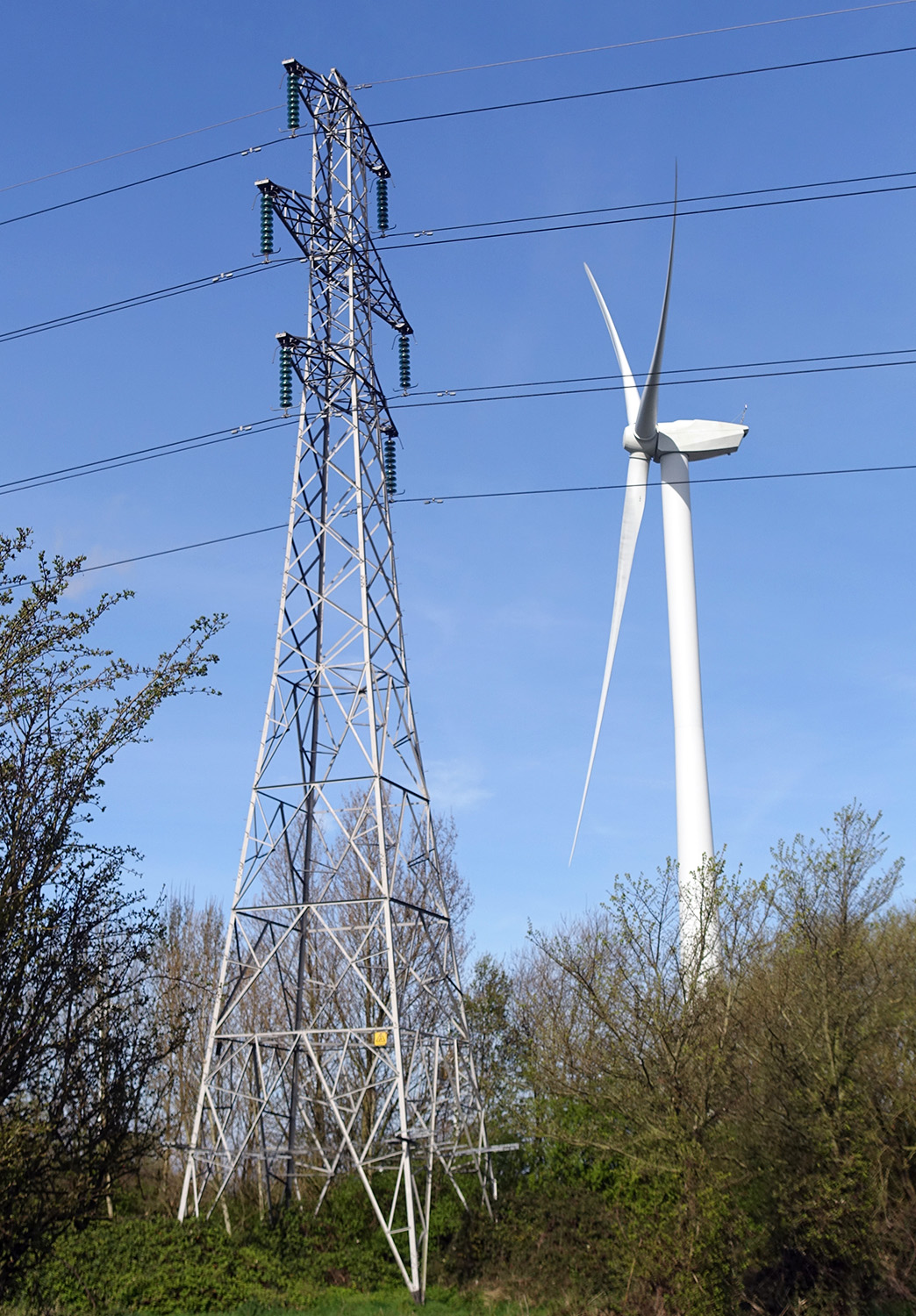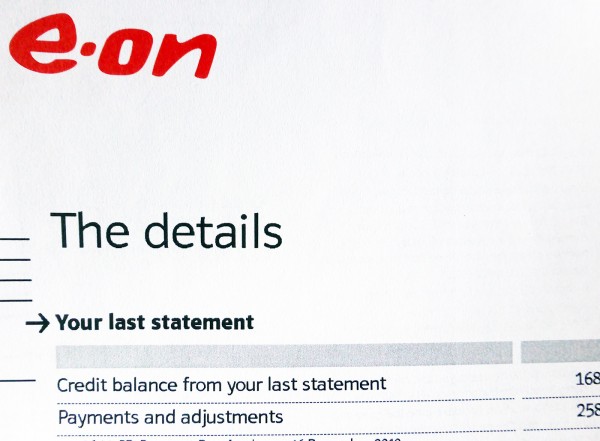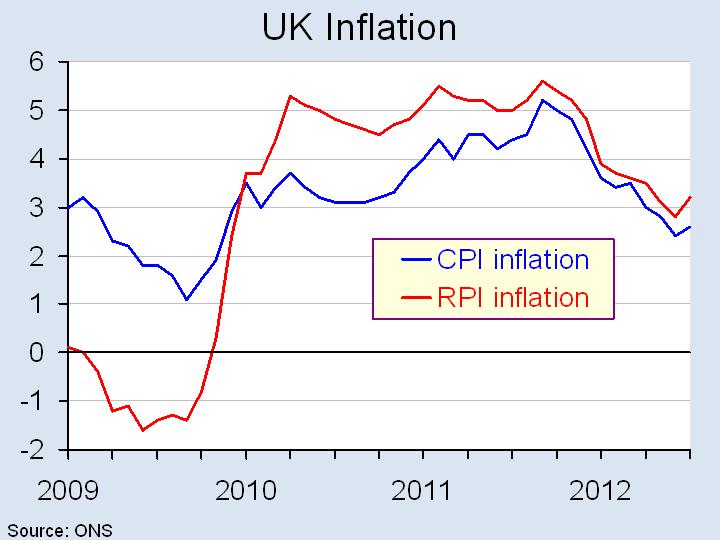 Following concerns about the market power of the Big Six energy suppliers in the UK and high prices for gas and electricity, the industry regulator, Ofgem, referred the industry to the Competition and Markets Authority (CMA) in June 2014. The CMA published its final report in June 2016. This argued that while there was sufficient potential for competition, consumers nevertheless needed further encouragement to switch suppliers. This would strengthen competition in the market.
Following concerns about the market power of the Big Six energy suppliers in the UK and high prices for gas and electricity, the industry regulator, Ofgem, referred the industry to the Competition and Markets Authority (CMA) in June 2014. The CMA published its final report in June 2016. This argued that while there was sufficient potential for competition, consumers nevertheless needed further encouragement to switch suppliers. This would strengthen competition in the market.
To encourage switching, the CMA proposed the creation of a database that would include the details of customers who have been on a supplier’s standard variable tariff (SVT) for three or more years. Competitor energy suppliers would have access to this database to offer better deals for these customers.
There had already been calls for price caps to be imposed on suppliers. For example, in the run-up to the 2015 general election, the then Labour leader, Ed Miliband, proposed imposing a price freeze. This was criticised by the Conservatives for being too anti-market, that it would encourage energy companies to raise prices prior to the freeze and that it would be of no benefit in times of falling wholesale energy prices (which was the position in 2015).
 Indeed, in its 2016 report, the CMA recommended price caps only for the 16% of people on prepayment meters and these would be variable caps not freezes. This was followed in February 2017, by Ofgem’s announcement that a temporary price cap for such customers would come into effect in April 2017. The level of the cap would vary by meter type and region. It would also be reviewed every six months to reflect changes in costs and remain in place until 2020. There would be no cap on other customers.
Indeed, in its 2016 report, the CMA recommended price caps only for the 16% of people on prepayment meters and these would be variable caps not freezes. This was followed in February 2017, by Ofgem’s announcement that a temporary price cap for such customers would come into effect in April 2017. The level of the cap would vary by meter type and region. It would also be reviewed every six months to reflect changes in costs and remain in place until 2020. There would be no cap on other customers.
But in the run-up to the 2017 election, the Conservatives announced that they would, after all, introduce a price cap on SVTs – 66% of customers are on such tariffs. Before the details were announced, there was much speculation as to what form such a cap would take? It would not be a simple freeze. But there was debate as to whether caps would vary with wholesale costs or whether they would be relative to the company’s lowest tariffs or to those of its rivals.
As it turned out, the proposal was for a cap on standard variable tariffs. It would be set by Ofgem and reviewed every six months. The cap would be based on the cheapest standard variable tariffs in each part of the UK, taking into account the variable costs for transporting energy there. Ofgem will adjust the cap every six months to reflect changes in the wholesale cost of energy.
Articles before details were anniunced
U.K. Energy Industry Faults May’s Election Pledge to Cap Prices Bloomberg, Rakteem Katakey (23/4/17)
Conservatives promise to cap prices in UK energy market Financial Times, Jim Pickard and Nathalie Thomas (23/4/17)
How might an energy price cap work? BBC News, Brian Milligan (24/4/17)
UK government vows strong action to rein in energy companies The Guardian, Adam Vaughan (19/4/17)
Energy bills: what’s the difference between Tory cap and Miliband freeze? The Guardian, Adam Vaughan (23/4/17)
Capping energy prices? Still a bad idea Adam Smith Institute blogs, Sam Dumitriu (25/4/17)
Bulb becomes ‘first’ provider to cut energy prices this year Moneywise (24/4/17)
Experts slam Conservative plans to cap energy bills as ‘clumsy and counterproductive’ The Telegraph, Lauren Davidson (23/4/17)
Capping energy tariffs isn’t a one-way ticket to Venezuelan-style economic ruin Independent, Ben Chu (25/4/17)
Articles after details were anniunced
Conservatives defend plans to cap UK energy bills Financial Times, Jim Pickard and Nathalie Thomas (9/5/17)
What is the energy price cap – and what does it mean for bills? The Telegraph, Jillian Ambrose (9/5/17)
The new energy price cap con? The Telegraph, Jillian Ambrose (9/5/17)
May defends plan to cap ‘rip-off energy bills’ BBC News (9/5/17)
Q&A: The Tory plan to cap energy prices BBC News, Brian Milligan (9/5/17)
Energy prices could still go up under Theresa May’s price cap plans, admits Business Secretary Greg Clark Independent, Rob Merrick (9/5/17)
Tory claims over energy price cap are just hot air The Guardian, Nils Pratley (9/5/17)
Video and audio
 UK government energy price cap ‘sheer politics’: Bernstein CNBC, Deepa Venkateswaran and Andrew Sentance (25/4/17)
UK government energy price cap ‘sheer politics’: Bernstein CNBC, Deepa Venkateswaran and Andrew Sentance (25/4/17)
 Energy UK: price cap could backfire Sky News, Lawrence Slade (24/4/17)
Energy UK: price cap could backfire Sky News, Lawrence Slade (24/4/17)
 Scottish Power: Capping prices ‘damages customers’ BBC News, Keith Anderson (24/4/17)
Scottish Power: Capping prices ‘damages customers’ BBC News, Keith Anderson (24/4/17)
 Tories to pledge energy bill cap BBC News, Michael Fallon (24/4/17)
Tories to pledge energy bill cap BBC News, Michael Fallon (24/4/17)
 Tories: Energy cap will protect vulnerable people BBC Today Programme, Business Secretary Greg Clark (9/5/17)
Tories: Energy cap will protect vulnerable people BBC Today Programme, Business Secretary Greg Clark (9/5/17)
 Energy cap: good or bad for consumers? Sky News, Stephen Fitzpatrick and James Kirkup (9/5/17)
Energy cap: good or bad for consumers? Sky News, Stephen Fitzpatrick and James Kirkup (9/5/17)
Questions
- What scope is there for tacit collusion between the Big Six energy suppliers?
- What is meant by the RPI–X price cap? How does it differ from proposals being considered by the government?
- Why are people often reluctant to switch energy supplier?
- How could people be encouraged to switch supplier?
- What are the advantages and disadvantages of imposing a price cap for SVTs (a) relative to costs; (b) relative to lower-priced tariffs?
- Comment on Centrica’s chief executive officer Iain Conn’s statement that “price regulation will result in reduced competition and choice, and potentially impact customer service”.
- Comment on the statement by Lawrence Slade, chief executive officer of Energy UK, that intervention would create “huge uncertainty around government intentions, potentially putting at risk the billions in investment and jobs needed to renew our energy system”.
- Would an announcement of the introduction of a price cap in the near future necessarily encourage energy companies to raise their price now?
 Rail companies will be permitted to raise average regulated rail fares next year by 6.2%. Not surprisingly, this has been met with dismay and anger by rail travellers, especially long-distance commuters, who could see their annual season tickets going up by several hundred pounds.
Rail companies will be permitted to raise average regulated rail fares next year by 6.2%. Not surprisingly, this has been met with dismay and anger by rail travellers, especially long-distance commuters, who could see their annual season tickets going up by several hundred pounds.
Some fares, such as advance tickets, are unregulated. Others, such as anytime, off-peak and season tickets, are regulated by the government. The formula for working out permitted price rises for regulated fares is RPI plus 3%, where RPI is the July annual inflation rate based on the retail price index.

The RPI figure was announced by the ONS on 14 August and was a surprisingly high 3.2% – up from 2.8% in June: see Table 21 in the ONS’s CPI And RPI Reference Tables, July 2012. (Click here for a PowerPoint of the chart on the left.) Hence average fares can rise by 3.2% + 3% = 6.2%.
Rail travellers are angry on three counts:
First, the RPI measure of inflation is generally around 0.5% higher than the CPI measure (which is used for working out public-sector pay increases and the uprating of pensions and benefits). The July figure for CPI inflation was 2.6%.
Second, the extra 3% added on top of RPI means that that rail fares are going up more rapidly than other prices, and incomes too. The reason given for this is to shift the burden of funding the railways from the taxpayer to the traveller.
Third, the formula applies to average fares. Rail companies can raise particular regulated fares by up to 5 percentage points more than the formula provided they raise other fares by less than the formula. Thus some fares are set to rise by 11.2% – including some of the most expensive season tickets.
The government justified the increases by arguing that the higher fares will allow more investment by the rail companies, which could result in lower costs in the future. Nevertheless, two thirds of the revenue from the above-inflation increases will go to the government and only one third to the rail companies.
Webcasts
 Inflation shock as rail fares set to soar Channel 4 News, Ciaran Jenkins (14/8/12)
Inflation shock as rail fares set to soar Channel 4 News, Ciaran Jenkins (14/8/12)
 Protests as rail fare price rises announced The Telegraph (14/8/12)
Protests as rail fare price rises announced The Telegraph (14/8/12)
 How do our rail fares compare with the rest of Europe? BBC News (14/8/12)
How do our rail fares compare with the rest of Europe? BBC News (14/8/12)
 Rail fare increase will make life better, says minister BBC News (14/8/12)
Rail fare increase will make life better, says minister BBC News (14/8/12)
 Passenger Focus: Train companies ‘using dark arts’ BBC News, David Sidebottom (14/8/12)
Passenger Focus: Train companies ‘using dark arts’ BBC News, David Sidebottom (14/8/12)
Articles
Rail fares set to increase by 6.2% Financial Times, Mark Odell (14/8/12)
Rail fares set to rise by 6.2% in January Guardian, Gwyn Topham (14/8/12)
Rail fare hike of 6.2% sparks angry reaction BBC News (14/8/12)
Soaring rail fares will do nothing for the recovery The Telegraph (14/8/12)
Commuters plead with Osborne to prevent 10 per cent rise in rail fares Independent, Oliver Wright (15/8/12)
Rail fare rises: how to keep your ticket prices as low as possible Guardian, Mark King (14/8/12)
Documents and information
Fares Review Conclusions 2003 Strategic Rail Authority (June 2003)
Fares Office of Rail Regulation
Fares on National Rail Association of Train Operating Companies
Questions
- What are the arguments for and against the general principle of using an RPI+X formula for regulating rail fares?
- What are the arguments for and against allowing train operating companies to raise regulated rail fares by an average of RPI plus 3%, with 2 of the 3 percent above RPI inflation going to the government?
- In what ways are travellers likely to respond to the higher prices?
- Why are some travellers likely to have a much lower price elasticity of demand for rail travel than others? What determines this price elasticity of demand?
- What externalities exist in rail transport? How should this impact on the government’s rail pricing strategy?
- How is infrastructure development funded for (a) rail, (b) roads and (c) airports? Does this lead to an efficient allocation of transport investment?
- How does rail pricing in the UK compare with that in other European countries? Should other European countries follow the UK’s policy of above inflation fare increases to fund rail investment?
On 26 November, the water industry regulator, Ofwat, published its decisions on the price caps that will apply to all the 21 water companies covering 23 areas in England and Wales from 2010 to 2015. Despite calling for average cuts of £14 in draft proposals released back in July, Ofwat is now requiring an average cut of just £3. This still means that average water prices will be some 10 per cent lower than those sought by the water companies. Note that all these figures are in real terms: i.e. after taking inflation (or deflation) into account.
But while customers in some areas will see their bills frozen in real terms, or even significantly cut, others will see a rise in theirs. The average price change varies from a fall of 7 per cent in Wales, East Anglia and Portsmouth to a rise of 13 per cent in Essex and Suffolk. There is also variation within regions, depending on factors such as whether or not you have a water meter. Thus, in the South West, customers without a meter could see a rise in bills of 29 per cent.
Not surprisingly, Ofwat’s decisions have received mixed reactions. The water companies claim that the price cap is too high to allow them to make the necessary investment in water infrastructure, such as replacing old pipes to cut down on leakages. Water customers, on the other hand, claim that Ofwat has been ‘captured’ by the industry and, as a result, has been much too lenient.
So who is right? And is the current system of 23 separate regional monopolies, regulated through price cap regulation, the best way of structuring and running the water industry? The following articles and videos look at the issues
Ofwat delivers flat bills for customers Ofwat news release (26/11/09)
Ofwat Publishes Its Decisions Regarding The Prices To Be Charged By Water And Sewerage Companies eGov Monitor (26/11/09)
Water prices to remain flat Financial Times, William MacNamara (26/11/09)
Water bills in England and Wales to be cut (including video) BBC News (26/11/09)
 Water price cuts ‘could stop leak programmes’ BBC Today Programme (26/11/09)
Water price cuts ‘could stop leak programmes’ BBC Today Programme (26/11/09)
The Big Question: Should water bills be going down even further than they are? Independent, Martin Hickman (27/11/09)
Water boys the winners with Ofwat? Independent, James Moore (27/11/09)
Households face higher than expected water bills Telegraph, Myra Butterworth (26/11/09)
There’s trouble in the pipeline as Ofwat boss fails to spot the cracks Telegraph, Damian Reece (27/11/09)
Water bills set to drop by only £3 a year Guardian, Tim Webb (26/11/09)
Regulator must find better way to fix water prices Guardian, Nils Pratley (26/11/09)
Water regulator bows to lobbying on bill price cuts (including video) Times Online, Peter Stiff (26/11/09)
Ofwat ruling on water bills will hit millions of unmetered homes Times Online, Robin Pagnamenta (27/11/09)
Water company shares buoyant after Ofwat ruling Guardian, Market Forces blog, Nick Fletcher (26/11/09)
Severn Trent leads water company shares higher after regulator’s review Telegraph (26/11/09)
The full report can be accessed from the Ofwat site at:
Final determinations on price limits Ofwat (26/11/09)
Questions
- Is price cap regulation of the RPI–X variety the best form of regulation? Explain with reference to both incentives and the issue of uncertainty.
- Explain whether water companies are natural monopolies.
- To what extent can competition be introduced into privatised utility industries as an alternative to regulation? Is increased competition a practical alternative to price cap regulation in the water industry?
- What are the arguments for and against installing water meters in each home so that people pay per litre used rather than paying a flat charge depending on the property value?
- Explain what is meant by ‘regulatory capture’. Is there evidence of regulatory capture in the water industry? Consider with respect to the November 26 ruling.
Is the power supply industry a cartel? Are the energy companies exploiting a position of market dominance to increase profits at the expense of consumers? At first sight, it would certainly seem so. Despite falling wholesale prices for gas and electricity, the six main power suppliers have not reduced prices to their customers. The result has been a substantial rise in profits. Over the past three years, the average annual gross profit for supplying each dual-fuel customer has been £110. The figure has now risen to £170, a rise of 55%. This is likely to rise further in the short term with further reductions in wholesale energy prices over the next few weeks.
But despite this large increase in profits, the power companies are considering increasing prices this coming winter if wholesale energy prices start to rise again, even though the expected wholesale price rise would still leave them with a gross profit of £140 per dual-fuel customer.
Ofgem, the gas and electricity industry regulator, wrote to the six main companies asking them to explain their pricing position. You can read Ofgem’s report from the link below. In it, Ofgem argues that there is scope for the companies to cut their prices. But Ofgem no longer has the power to cap prices: in 2002 the RPI-X system of price cap regulation was abandoned, since it was felt that there was enough competition between suppliers not to warrant price regulation.The articles below consider the question of whether the companies are justified in their pricing policy or whether they are exploiting their market power to make excessive profits.
No energy cuts despite huge profits (video) Channel 4 News (18/9/09)
Energy bills may rise despite wholesale price drop Times Online (19/9/09)
Where is the will to power? Times Online (19/9/09)
Energy bills set to rise further, companies warn Guardian (18/9/09)
Energy bills ‘unlikely to fall’ BBC News (18/9/09)
Bills face a power surge (Douglas Fraser’s Ledger) BBC News (18/9/09)
An Electricity and Gas Price Cartel? Why Ofgem Can’t Tell iStockAnalyst (17/9/09)
Evidence from Ofgem:
Ofgem’s letter to the six main suppliers and their responses to Ofgem can be read here
Ofgem’s findings can be read in Quarterly Wholesale / Retail Price Report – August 2009
Ofgem Factsheet: Household energy bills explained
Questions
- Assess the justification by the power companies for not reducing the price of gas and electricity to their customers.
- Explain what is meant by ‘hedging’ in the context of the purchase of gas and electricity.
- The power suppliers are an oligopoly. If there is collusion between them, what form does it take? Why is it very hard to find evidence of collusion?
 Following concerns about the market power of the Big Six energy suppliers in the UK and high prices for gas and electricity, the industry regulator, Ofgem, referred the industry to the Competition and Markets Authority (CMA) in June 2014. The CMA published its final report in June 2016. This argued that while there was sufficient potential for competition, consumers nevertheless needed further encouragement to switch suppliers. This would strengthen competition in the market.
Following concerns about the market power of the Big Six energy suppliers in the UK and high prices for gas and electricity, the industry regulator, Ofgem, referred the industry to the Competition and Markets Authority (CMA) in June 2014. The CMA published its final report in June 2016. This argued that while there was sufficient potential for competition, consumers nevertheless needed further encouragement to switch suppliers. This would strengthen competition in the market. Indeed, in its 2016 report, the CMA recommended price caps only for the 16% of people on prepayment meters and these would be variable caps not freezes. This was followed in February 2017, by Ofgem’s announcement that a temporary price cap for such customers would come into effect in April 2017. The level of the cap would vary by meter type and region. It would also be reviewed every six months to reflect changes in costs and remain in place until 2020. There would be no cap on other customers.
Indeed, in its 2016 report, the CMA recommended price caps only for the 16% of people on prepayment meters and these would be variable caps not freezes. This was followed in February 2017, by Ofgem’s announcement that a temporary price cap for such customers would come into effect in April 2017. The level of the cap would vary by meter type and region. It would also be reviewed every six months to reflect changes in costs and remain in place until 2020. There would be no cap on other customers. UK government energy price cap ‘sheer politics’: Bernstein CNBC, Deepa Venkateswaran and Andrew Sentance (25/4/17)
UK government energy price cap ‘sheer politics’: Bernstein CNBC, Deepa Venkateswaran and Andrew Sentance (25/4/17) Energy UK: price cap could backfire Sky News, Lawrence Slade (24/4/17)
Energy UK: price cap could backfire Sky News, Lawrence Slade (24/4/17) Scottish Power: Capping prices ‘damages customers’ BBC News, Keith Anderson (24/4/17)
Scottish Power: Capping prices ‘damages customers’ BBC News, Keith Anderson (24/4/17) Tories to pledge energy bill cap BBC News, Michael Fallon (24/4/17)
Tories to pledge energy bill cap BBC News, Michael Fallon (24/4/17) Tories: Energy cap will protect vulnerable people BBC Today Programme, Business Secretary Greg Clark (9/5/17)
Tories: Energy cap will protect vulnerable people BBC Today Programme, Business Secretary Greg Clark (9/5/17) Energy cap: good or bad for consumers? Sky News, Stephen Fitzpatrick and James Kirkup (9/5/17)
Energy cap: good or bad for consumers? Sky News, Stephen Fitzpatrick and James Kirkup (9/5/17)
